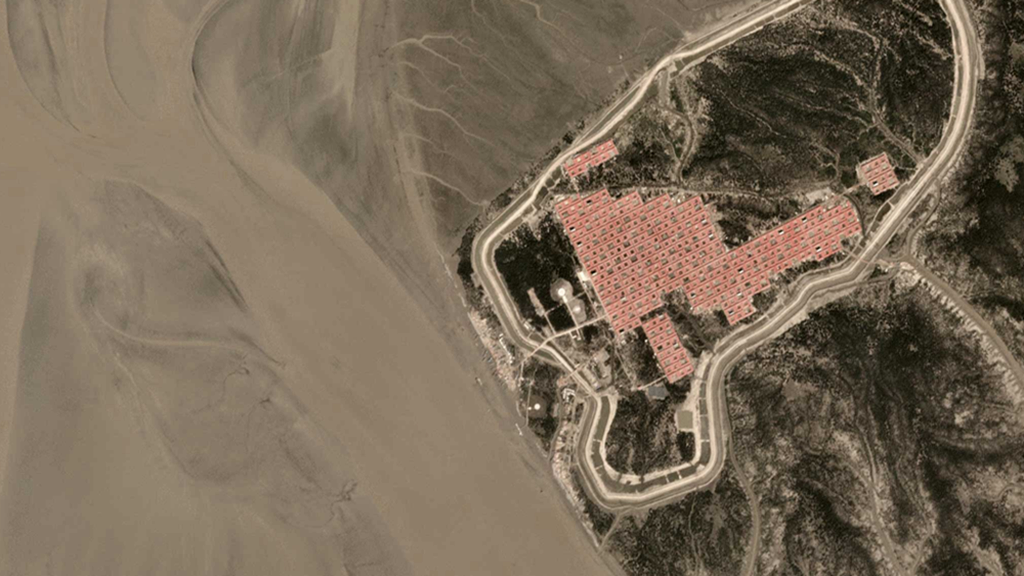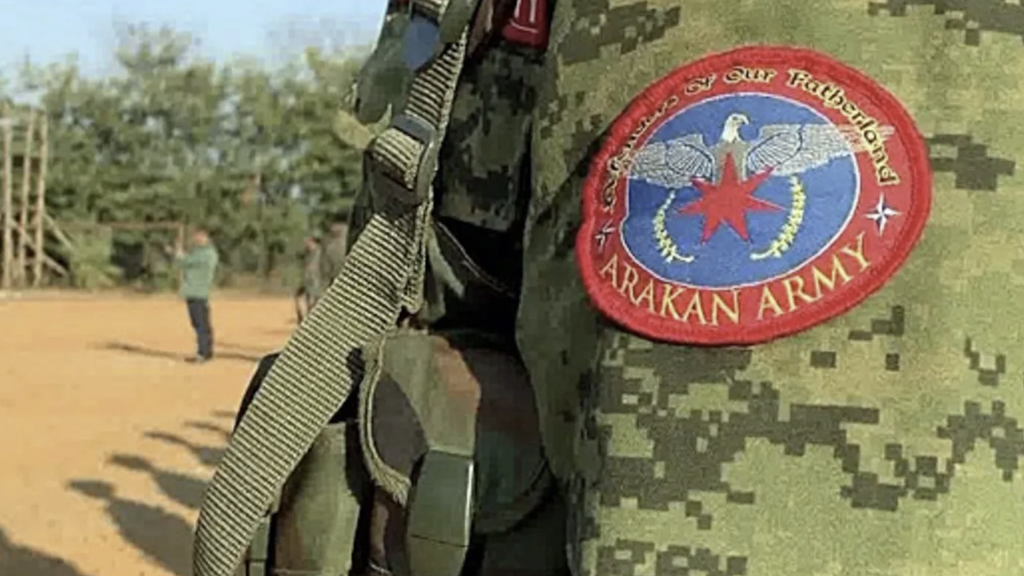
The Relocation of Rohingya Refugees into the Bhasan Char
- 13/12/2020
- 0
By Aman Ullah
On December 3, 1,642 inmates of the existing camps were brought to the Char via Chittagong by seven vessels of the Bangladesh Navy with much fanfare. Initially, 2,500 are expected to be brought to the silty islet.
Official sources informed that USD 350 million was spent to develop the facility. It has provisions for yearlong supply of freshwater, uninterrupted power supply, agricultural plots, 120 cyclone shelters, 2 hospitals, 4 community clinics, mosques, telecom services, teaching centers, playgrounds and a police station.
About Bhasan Char
Bhasan Char, which means “floating island” in the Bengali language, emerged less than 20 years ago in the Bay of Bengal. Bhasan Char also known as Char Piya, located about 6 kilometers (3.7 mi) from Sandwip island and 37 miles (60 km) from the mainland The island was formed by Himalayan silt in 2006. It spans 40 square kilometers (15 sq mi; 4,000 ha). The Government of Bangladesh plans to construct a total of 1,440 buildings, including 120 cyclone shelters, to relocate 100,000 Rohingya refugees from the mainland camps of Cox’s Bazar. The Government of Bangladesh first suggested resettling Rohingya refugees on the island in June 2015.The proposal was characterized by the United Nations Refugee Agency as “logistically challenging”. On January 26, 2017, the Bangladeshi government ordered their resettlement nonetheless. Human Rights Watch called it “a human rights and humanitarian disaster in the making.
The Five-layer protection system
Mohammad Jamil Khan in his news report of ‘Natural Disasters: Work going on for 5-layer protection’ published at The Daily Star, a Bangladesh’s national newspaper dated December 3, 2020 that: – “Uri grass is growing naturally along the shore of Bhasan Char. This type of grass provides protection to the shore and only grows in areas where there is no possibility of erosion, according to officials of the housing project there.
The project officials, however, are not merely relying on this protection. They are now working to put in place a five-layer protection system to save the island from natural disasters.
The Bangladesh government has spent around Tk 3,100 crore to develop the island, build infrastructure and a protection system against extreme climate events under a project delegated to Bangladesh Navy.
“We have developed a protection system after analysing the weather models of the last 176 years,” Commander Md Anowerul Kabir, deputy project director of Ashrayan-3 project (the official title of the Bhasan Char project), told The Daily Star on Monday.
Strong concrete pillars have been installed along the 2.5km long sea shore of the island to weaken strong currents as its first line of defence. This protection dyke, called “Screen Break Water”, would weaken sea waves by 75 percent, said officials.
Gravels of diameters one to two inches have been dumped beside the pillars. This would weaken the sea currents by another 25 percent, they added. Besides, geo bags have been dumped on the layer of gravels to make sure that the island is protected even better.
Commander Kabir said they adopted a scientific protection system and there was no scope for the erosion of the shore.
A natural defence mechanism has also been used on the island by planting mangrove saplings. Around one lakh saplings were planted in the island last year. Steps have been taken to plant another 10 lakh saplings, said, project officials.
A former forest department official, who has 25-year working experience in mangrove forests, is helping project officials plant the saplings.
Construction of the main embankment is going on around 100 feet away from the seashore. The embankment will be 19 feet high from the ground and 12-km long around the new settlement.
“We will plant grass along both sides of the embankment to make it stronger,” said Commander Kabir.
Mangrove afforestation is going on to protect the island from cyclones and storm surge.
About possible waterlogging, Kabir said they have already built a modern drainage system in the island and there will be around 18 sluice gates in the embankment.
Each of the 120 cyclone shelters in the island are built on a plinth 12 feet above the ground. Each shelter can accommodate 1,000 people and 200 cattle.”

The reasons behind the relocation
The dim prospect of repatriation to Burma in the near future and the gradual onset of donor fatigue for this potentially protracted refugee situation and the dwindling contribution of the international community may necessitate policymakers to think of devising strategies for engaging refugees for income-generating activities and self-sufficiency.
The mega camp is overcrowded and relocation is required to avoid accidents and fatalities due to landslides in the hilly terrains where the many refugees are currently located. In 2018 the United Nations estimated that 215,000 people are at risk of landslides and flooding, and about 44,000 are at very high risk. Camps are supposed to have a density of about 45 square feet per person. The mega camp has an average of only 11.
Moreover, the deteriorating security situation (drug smuggling, human trafficking and conflicts between refugee groups) in Teknaf and Ukhiya Upazilas of Cox’s Bazar district has been identified as one of the major reasons that prompted the government to plan and execute this project since 2015.
Disadvantages of Bhasan Char
The only two-decade-old silt islet has been deemed as unsustainable for human habitation and could be seriously affected by rising sea levels and storm surges that may accompany super-cyclones, a phenomenon that is likely to increase in future. The remoteness of the site will not only throw a severe challenge in supplying provisions to this massive number of refugees, particularly during the monsoon when seas become rough.
The isolation of the Char and the increase in distance from the Burmese border may weaken their bond with their motherland and take a psychological toll on the residents of Bhashan Char. The feelings of segregation and loneliness are likely to be exacerbated as so far Bangladesh government has made no commitment to allow refugees freedom of movement in and from the silt islet.
A major limitation of the project has been the lack of participation of key stakeholders in identifying and planning the facility. In all likelihood, the project planners were guided by state security considerations rather than human security concerns of the inmates. Anyone would find the concrete structures with rooms and shared kitchen and toilet arrangements, lighting and running water facilities as a way better than those that the refugees have to put with at their present sites in the mega camp. The important element missing in this approach is just like the rest of us, refugees are also social beings. Like us, they fear isolation and loneliness and long for the freedom of movement.
The failure of the authorities to deliver on their commitments to conduct technical and protection assessments to review the “safety, feasibility and sustainability” before putting the facility into operation to the satisfaction of key stakeholders has further accentuated the concerns. UN’s first technical assessment mission was scheduled from November 17 to 19, 2019, but was shelved subsequently. No fresh date was announced.
How voluntary Is this relocation?
The authorities’ reneging on their pledge that relocations would be voluntary and based on explicit consent has further compromised the current effort. The UN claimed it had “limited information” on the relocation efforts and was not involved in the process. Concerns have also been expressed that no effective protection mechanism has been put in place at the Bhashan Char.
A good number of those shipped to the islet claimed that they were forcibly drafted or were fed with wrong information. Many claimed that they never volunteered and had learnt their names on the list from the Camp-in-Charge (CIC). A section of them fled the dwellings. A few stated they were told that being on the list would mean getting priority to repatriate to Burma. Others thought the listing was for food rations. Some refugees admitted that they voluntarily enlisted as they were informed by majhis and CIC volunteers they would be able to choose livelihood opportunities in the Char, such as fishing or farming and would have better access to health facilities and their children would get an education. A Human Rights Watch report cites that some “had come under pressure from government officials who used threats and offers of cash and enticements…”
While the authorities are justified in mulling relocation to protect the vulnerable members of the community from landside prone zones, presenting Bhashan Char as the only feasible site appears to be problematic. Experts and rights activists have argued that Bhashan Char does not have to be the sole option. There are at least six feasible relocation sites in Ukhiya sub-district totalling more than 1,300 acres that could accommodate 263,000 people.
The Advantages sites better than Bhasan Char
There are some distinct advantages of those sites over Bhashan Char. The sites are located mostly in flat land in an eight-kilometer stretch of the west of Kutupalong-Balukhai Expansion Camp between the mega camp and the coast. Those fall within the containment area that the government has designated to limit free movement of Rohingyas. Another advantage is that residents there would enjoy close geographical proximity of the mega camp where other refugees are based. The sites would also be relatively close to the border with Burma and will keep the refugees’ hope alive to return there. Needless to say, so far, the authorities have not provided any explanation as to why they were unwilling to consider this much less expensive option for relocation, stubbornly insisting on the Bhashan Char option that is fraught with controversy and uncertainty.






